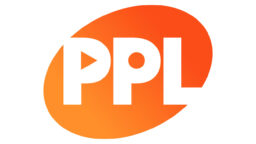PPL CIO Mark Douglas (pictured) looks at the evolution and benefits of the Virtual Recordings Database, a shining example of cross-border co-operation and efficiency that is benefiting CMOs and performers…
I have previously voiced my frustrations about how little we share in this industry when it comes to technology platforms and databases. I have also, however, identified some positive examples of sharing, and I am going to focus this article on one in particular, the ‘Virtual Recordings Database’.
VRDB is a system that was developed within SCAPR, the international association for performers’ collective management organisations (CMOs). It is a project that started in earnest in 2014. Its mission was to make a fundamental shift away from a claims-based model for international performer collections, to one based around a shared and agreed view of performer line-ups on sound recordings and audio-visual works.
Within the SCAPR community, the traditional model for performer payments flowing between countries was for each CMO to send out a file that listed all the recordings that had been played in their country within a given year (the ‘played recordings file’).
This file would be sent to all other performer CMOs, who would then match it to their local repertoire database. That society would then generate a file including a claim for every instance where a performer they represent was included in the line-up of those matched recordings.
To this day, this is how many significant parts of our industry continue to function. But it is a very inefficient way of doing things.
Not only does it result in large volumes of data files regularly flowing back and forward between each and every CMO, but it also typically results in the process being run from first principles every time. In a slightly Groundhog Day fashion, the processes get run again and again with little or no reference to previous iterations.
VRDB changed this model by putting a shared database of recordings and performer line-ups in the centre of things. That central database acts as the retained memory of recordings and their line-ups and is at the heart of making the process much more efficient.
Instead of waiting for a played recordings file to be delivered, each SCAPR member proactively uploads into VRDB the recordings and performer line-ups that they hold and maintain locally. When these recordings land in VRDB, matching logic is used to determine whether any other societies have already uploaded the same recording.
Where matches are found, the differences in the metadata between the VRDB view of things and the new upload are identified. Each recording in VRDB has a Repertoire Manager (typically the country of commissioning for the recording), who then receives notifications of these data differences and gets the opportunity to accept or reject them.
To date, more than 10 million distinct recordings have been uploaded and are now held in VRDB, with line-ups that are the result of sharing and collaboration. For the first time, all that work reviewing and amending performer line-ups that used to happen in-country and largely stay
in-country is now being shared.
“More than 10m recordings have been uploaded and are now held in VRDB.”
As well as being more efficient, it means that the allocation of neighbouring rights income is more accurate and more consistent. Who knew?
There are two other main components to VRDB. The first is playlist matching. When a CMO receives details of the music that has been played in their country, these playlists invariably include references to recordings that are not in that CMO’s local database. The CMO can upload those unmatched playlist items into VRDB where matching and searching functionality can be used to locate and download the necessary metadata.
This searching capability is not restricted to the uploading CMO. VRDB allows any CMO to assist in finding matches. This turns matching into a push and pull activity where you not only have the original CMO searching for matches, but you also have the other CMOs making recommendations.
This is an interesting feature as it leverages a CMO’s motivation to make sure that their recordings are being matched to. If, for example, a CMO has a lot of classical performer members, it is very much in that society’s interests to assist other CMOs in searching for and making those traditionally difficult classical music matches.
It also means that SCAPR can engage specialist third party matching services on behalf of the entire community. As well as being a very efficient way to procure such services, it allows SCAPR CMOs to benefit from matching approaches and technologies (such as AI and Machine Learning) that they may not be able to if acting alone.
The third and final piece of VRDB is the uploading of played recording files. When a CMO has completed the allocation of royalties for a given period, they upload the details of all the recordings that were included in that distribution.
“Importantly, VRDB is not a threat to local systems; it augments them.”
To the extent that any of these are not already included in the VRDB database (they may have been held only in the local database and not yet uploaded), they will be matched to the VRDB repertoire database and VRDB IDs assigned.
Through this mechanism, the CMO has a link between all the local recordings that they distribute money against and the VRDB repertoire database. This allows them to use the repertoire synchronisation functionality of VRDB.
Through this, they can periodically download a file of all changes that have been made to the VRDB database for recordings that they distribute against. This ensures they have all the performer line-up additions and deletions that have been approved by the Repertoire Manager and keeps their local database synchronised with VRDB.
In recent times, a powerful reconciliation tool has been developed that allows a CMO to compare the performer line-up in their draft distribution results against VRDB and to identify where the line-ups differ.
This rich functionality provided by VRDB is making a real difference to the efficiency and accuracy of international performer collections. By the end of 2022 there were 15 SCAPR CMOs that were fully operational on VRDB, with a further 10 that have started their transition journey.
I have personally been involved from the outset of VRDB, so I have seen much of the journey it has been on. At the most recent gathering of SCAPR CMOs in Belgrade there was a presentation on just how far VRDB had progressed, and it caused me to reflect on what it was about this little-known project that has made it a success.
Firstly, very importantly, VRDB is not a threat to local systems; it augments them. Rightly or wrongly, CMOs are protective of their technology systems. They are often a complex mesh of highly integrated components and staff knowledge, and business processes are often tightly coupled with the existing systems.
Secondly, we did not try to boil the ocean, nor did we seek perfection. We developed a set of core requirements that worked for most and adopted a minimum viable product approach in the delivery.
Even now, nine years on, we are still evolving the system to deal with the edge cases and trickier requirements. But we are doing it from a place where the existing functionality is well understood.
Thirdly, through the delivery phase of the project, we took genuine business operations and technical experts out of their businesses to drive the project. Using an agile delivery model, that group of experts met in person for four-five days every month to thrash out the detailed requirements and solution design.
Over a period of about 20 months, those requirements were progressively developed and put live, with the role of the operational specialists increasing as the system transitioned into live use. Importantly, whilst that group was supported by a technology delivery partner, control was never relinquished to them.
Finally, but perhaps most importantly, we had patience. It takes time to adapt to and integrate systems that deliver this level of change and not everyone is able or ready to move at the same pace.
There is still more functionality to refine, edge cases of functionality to accommodate and more on-boarding to be done, but the same patient and considered approach will prevail and VRDB will continue to succeed.
Perhaps one other reason VRDB was a success is that it kept a low profile. Large, multi-country technology projects are never easy to deliver, and to have the world watching in expectation seldom helps. VRDB was never about high-profile fanfares. It was about making practical and pragmatic improvements to the muck and bullets of CMO business processes and what it lacks in industry awareness, it more than makes up for in the success it is delivering.

MBUK is available via an annual subscription through here.
All physical subscribers will receive a complimentary digital edition with each issue.
Music Business Worldwide





